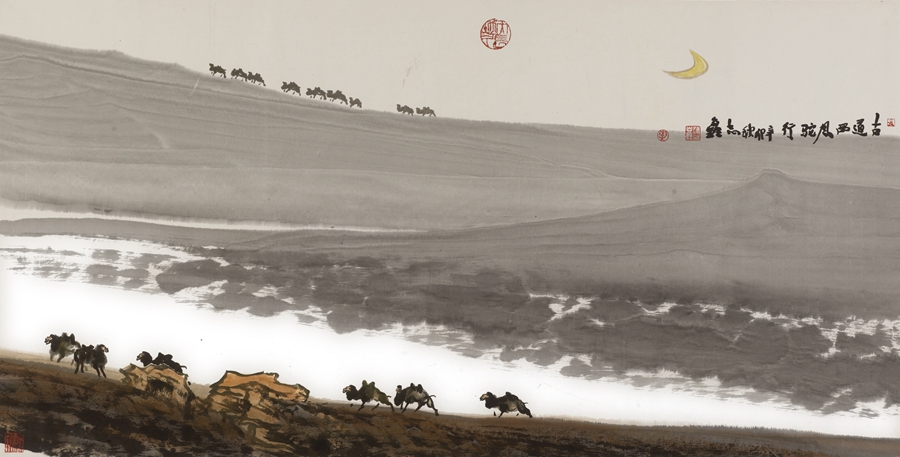

In the next three years, Jiang created a series of landscape paintings of the plateau. Soon after, in 1986, he held his first solo exhibition at the National Art Museum of China.
Jiang talks about the subjects of his paintings with a sense of wonder and amazement. "The exhibition's success empowered and motivated me. I could not stop, so I visited the Yellow River and its Hukou Waterfall," he says. "I was so excited that I took my shirt off and threw away the fruit I was carrying."
He then visited other scenic spots along the Yellow River, painting the waterway in several different forms, from its limpid tranquillity to its unruly streams.
As the need to showcase artwork connecting with his northwestern Chinese identity grows, Jiang's love for the land also extends to creations based on the local flora and fauna. This includes the wild yak and the tenacious diversifolious poplar trees, known to grow in arid soil and desert landscapes.
"The poplar forest is like a battlefield, many standing and others fallen. For 1,000 years, some trees have survived, some have died but have not fallen, and some have fallen but have not rotten yet," Jiang says.
"Upon seeing the trees, I felt the urge to hug them and wail. There was almost like a spiritual connection between us. I not only chose them as the subjects of my paintings, but they also chose me."
His representative subjects, including the Yellow River, the loess and the desert, are showcased across seven chapters in two volumes of his selected works.